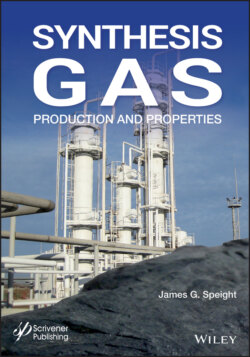Читать книгу Synthesis Gas - James Speight G., James G. Speight - Страница 40
2.3.8.1 Biomass and Coal
ОглавлениеThe gasification of biomass and coal (Chapter 4, Chapter 6) blends is of considerable current interest because of the reduction of the usual high yield of tar products that result from biomass gasification. Various operations involved in the biomass-coal-gasification process such as the typically high moisture-content biomass is usually not just dried, but also subject to torrefaction which involves heating to temperatures typically ranging between 200 and 320oC 390 to 610oF) in the absence of oxygen, at which point the biomass undergoes a mild form of pyrolysis) and possibly compacted – this improves the quality as a feedstock for the process. Also, size reduction of both the biomass and the coal to uniformly sized particles is required for optimum gasification.
The product gas compositions are influenced by both the type of biomass co-gasified, as well as its proportion in the feed mixture. Generally, higher H2 content results from greater biomass inclusion; in particular, lignin in woody biomass seems to boost H2 yield in syngas. A wide range of proportions of coal and biomass may be possible for given applications, but the optimum is a complex function of the type of coal used, type(s) of biomass, gasifier type and operating conditions, desired syngas composition, etc., not to mention the available quantities of the biomass which may be considerably less than the coal available.
Furthermore, the cleanup of synthesis gas derived from mixed feedstocks may be more complicated than for gasification or of the individual feedstocks because the species present in each raw feedstock as well as those (environmentally unfriendly) species that are present in elevated amounts from, say, biomass gasification (such as tars and alkalis) may need to be addressed.
